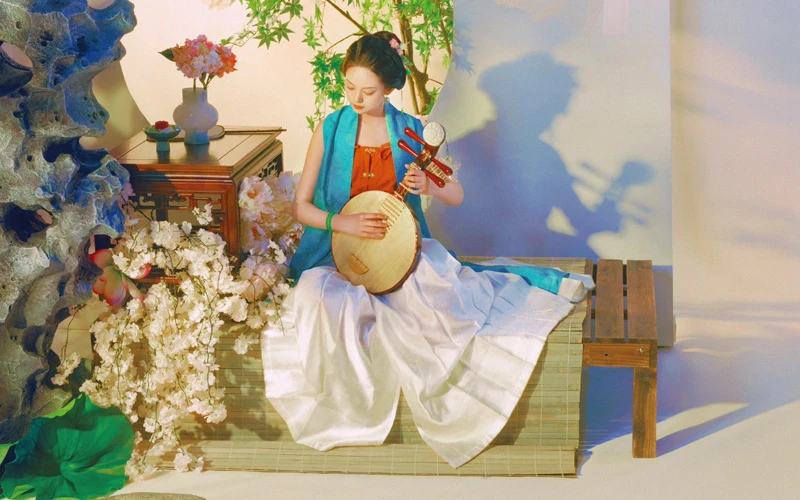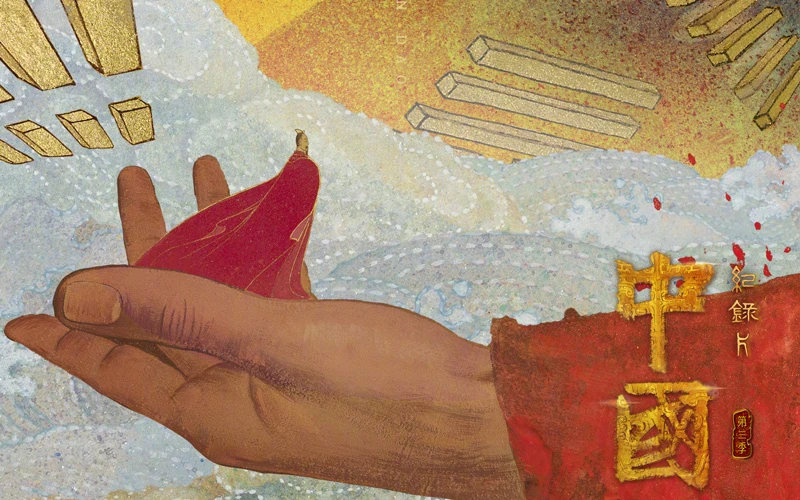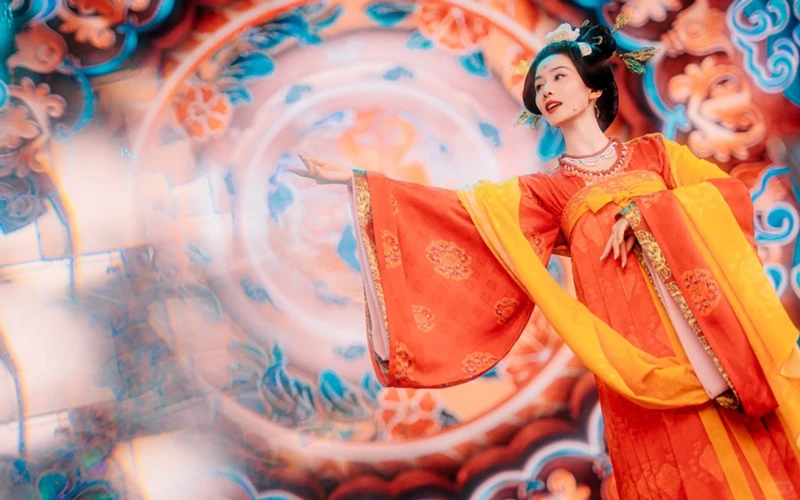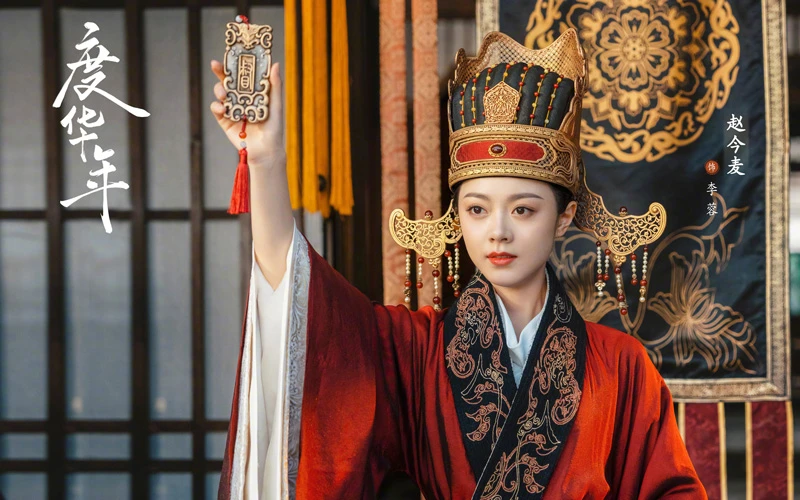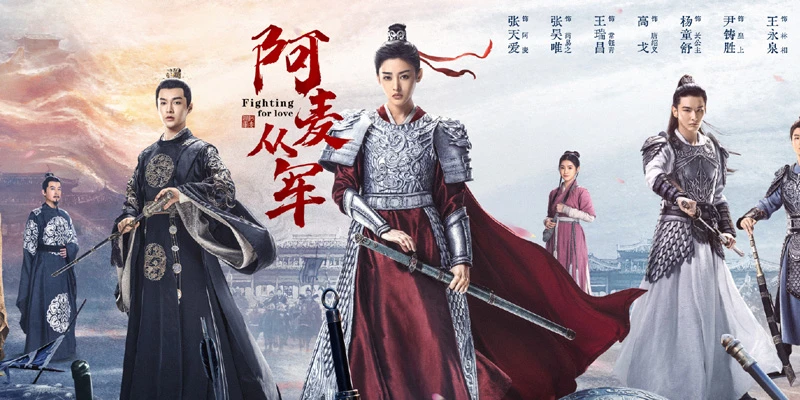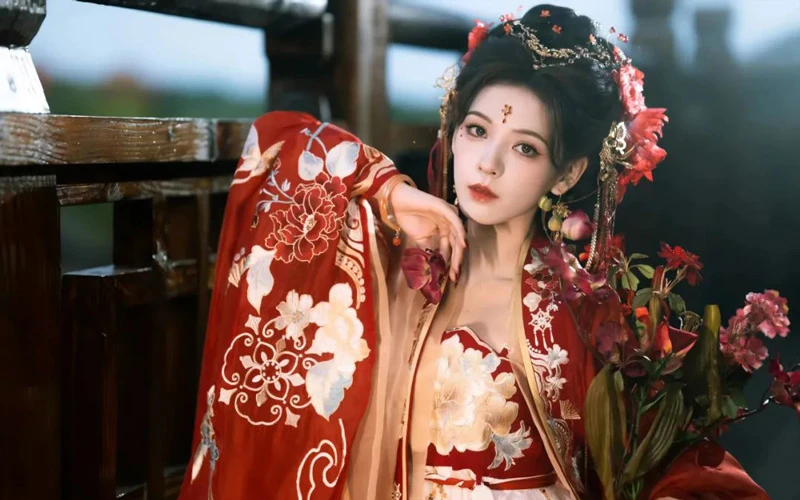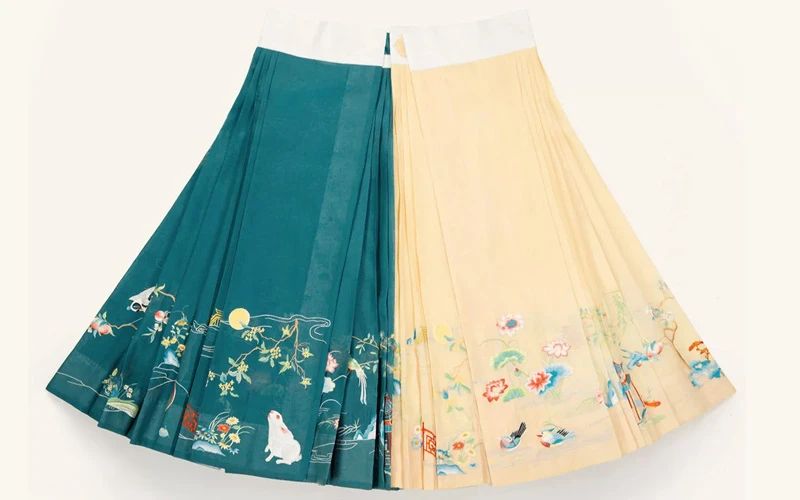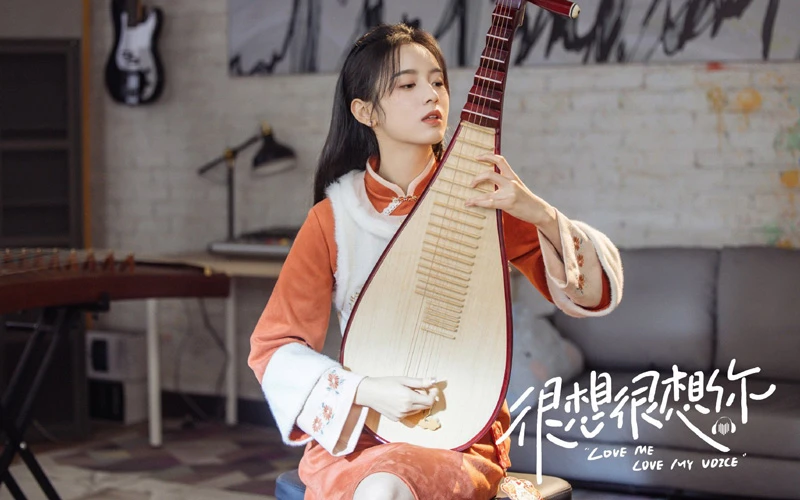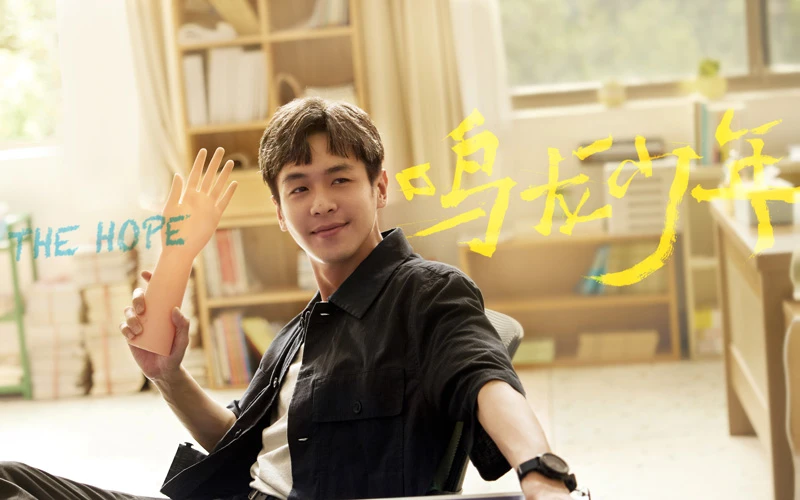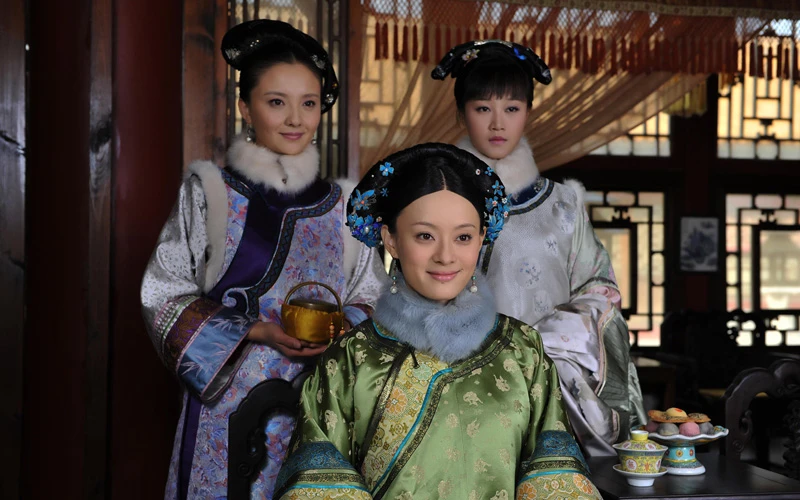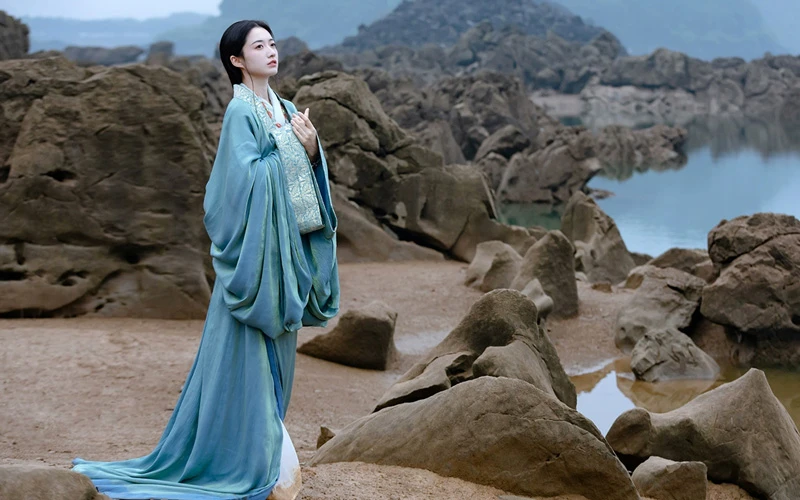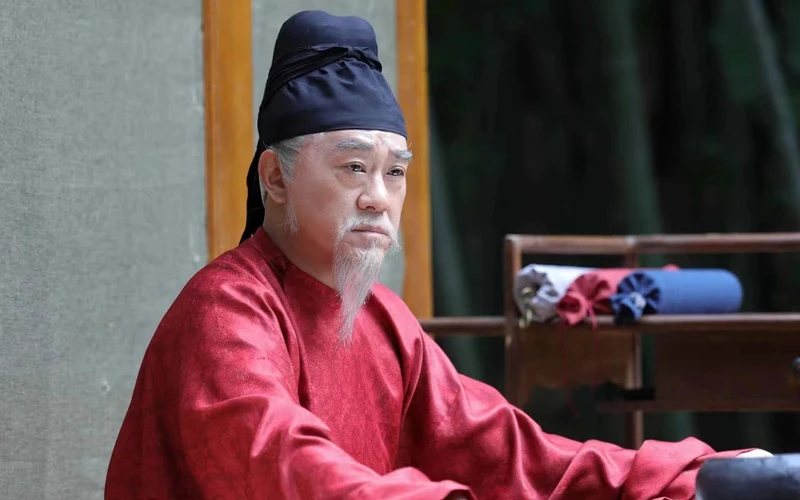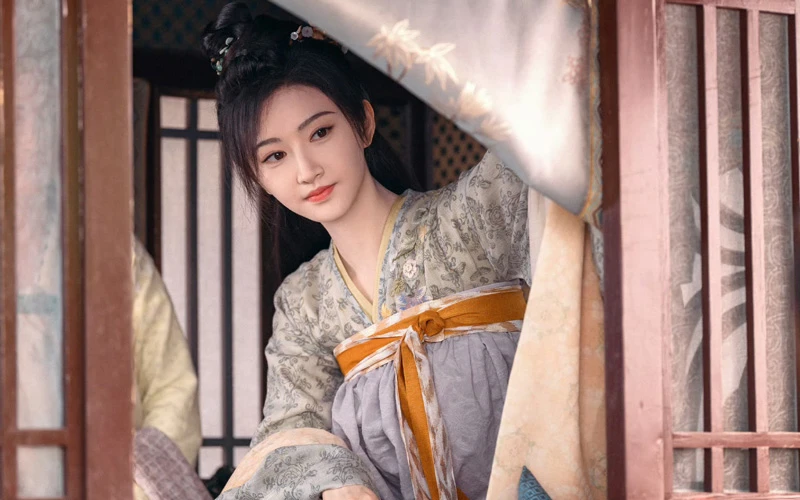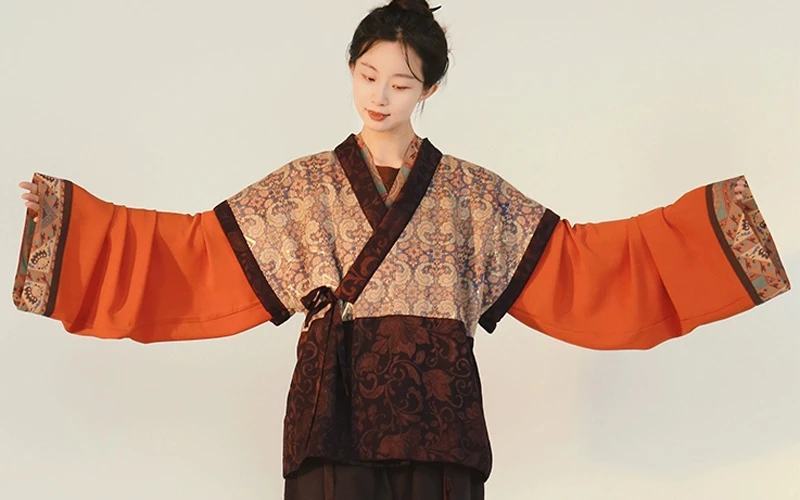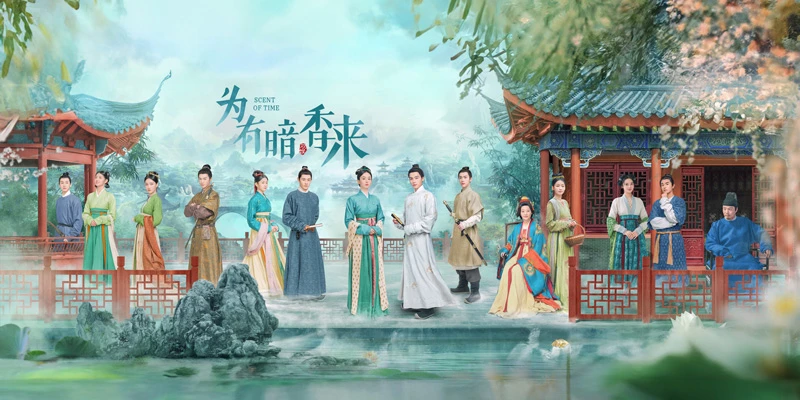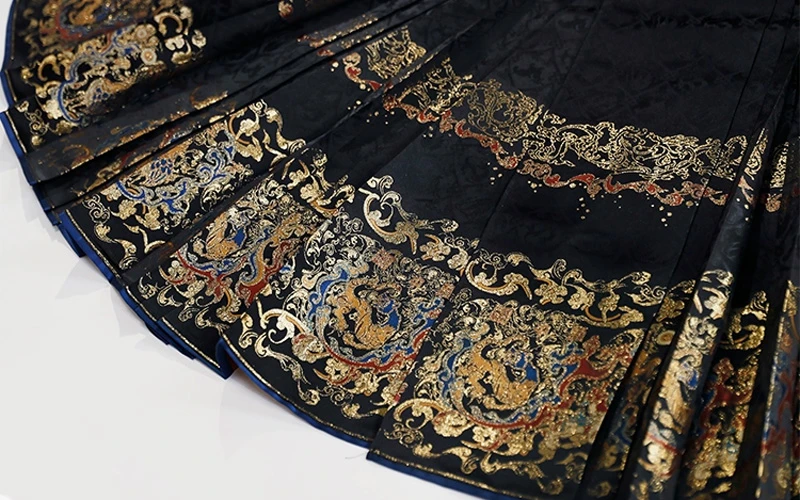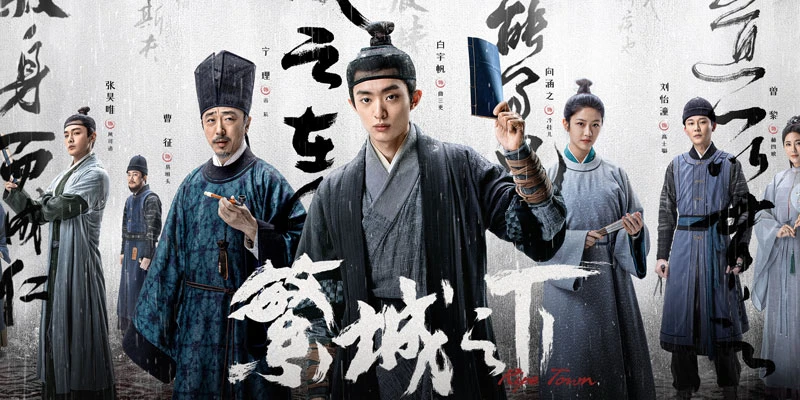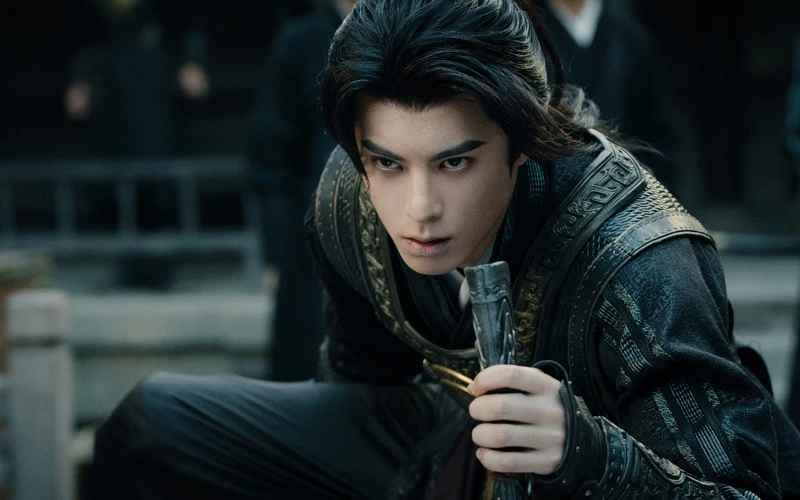Article
搜索结果:
-
Beyond Tradition: The Hanfu Revival and its Influence on Daily Life
The China Spring Festival Gala of 2024 received high praise, with the program "Nian Jin" providing a delightful surprise to the audience. Liu Tao, Liu Shishi, Li Qin, and Guan Xiaotong appeared on stage in costumes from different dynasties such as Han, Tang, Song, and Ming, leading a group of Hanfu girls to present a visual feast of traditional culture to the audience. Hanfu has finally gained recognition once again, being showcased to people nationwide and even worldwide. Behind this success lies a movement called the "Hanfu Revival" that has been unfolding over the past twenty years. Countless enthusiasts of Hanfu, undaunted by criticism, have cherished traditional values, all in the pursuit of reviving the attire of the Han people that was once stripped away. From facing scrutiny to now being ubiquitous, how has the revival of Hanfu come to this point, and what drives their unwavering dedication? In 2003, a group of awakeners and practitioners of Han culture began to gather on a forum called Han Wang, where one of the main topics of discussion was Hanfu. Despite being relegated to the sidelines of history during the late Ming and early Qing dynasties, Hanfu, as a traditional attire of… -
Documentary China Season 3: Discovering the Origins of Chinese Civilization
From the Spring and Autumn period to the prosperous Tang Dynasty, from idealism to realism, the first two seasons of the epic documentary "China" made a strong entry into the realm of high-scoring documentaries, receiving unanimous acclaim. Unexpectedly, the "China Season 3" took a different approach, starting from mythology and embarking on a reverse journey through time: from early myths to ancient history, from primitive society to agrarian civilization, the establishment of the state, and the development of rites, allowing us to glimpse the civilization codes shimmering in the galaxy of history. What is even more noteworthy, the "China Season 3" incorporated a large number of the latest archaeological discoveries and invited 183 outstanding young artists to create 443 Chinese paintings. Through special effects, the paintings came to life, combining storytelling and aesthetics to provide us with an artistic feast. Unique realm of romantic imagination Every civilization has its own creator god. Just like a prelude to life, in Chinese mythology, Pangu is the god who broke the chaos, bringing light to the world, creating the first mountain and the first river. Nuwa, with a human head and a snake body, represents the gods of eternal life and reproduction,… -
2024 Spring Festival Gala Highlight: Nian Jin - Traditional Hanfu and Ornate Designs
The program "Nian Jin" at the 2024 CCTV Spring Festival Gala showcased the beauty of traditional Hanfu from various dynasties to billions of viewers. Among them, the exquisite patterns connected the vision of a prosperous new year and allowed more people to understand the essence of traditional Hanfu, which is supported by classical patterns and traditional fabrics. From the grandeur of the Warring States period to the elegance of the Ming Dynasty, this stage performance passed down the beauty of China's thousands of years. Liu Tao, Liu Shishi, Li Qin, and Guan Xiaotong led the singing of "Nian Jin", and they represented the splendor of the Han, Tang, Song, and Ming dynasties, HANTIME will share the highlights in detail with us. Liu Tao's outfit consists of a Zhiju robe and a Gui Yi, with yellow as the main color, representing a solemn and grand emotional meaning. The pattern combines the patterns of the Chinese flowering crabapple and clouds, with a cape made of swallowtail gauze. The hem of the robe is made of Changle Mingguang brocade, a Han dynasty brocade discovered in Loulan, Xinjiang. The pattern mainly features animal motifs, with the words "Changle Mingguang" symbolizing auspiciousness, intricately woven with… -
Yang Mi's Stunning Hanfu Style at the 2024 Henan Spring Festival Gala
If you watched the 2024 Henan TV Spring Festival Gala, you would definitely be impressed by Yang Mi's portrayal, as she single-handedly interpreted the classic costumes of the Tang, Song and Ming dynasties in Hanfu. The beauty of Chinese Hanfu permeates Chinese civilization, with clothing being of utmost importance in daily life. Whether it's the elegance of the Han dynasty, the gracefulness of the Wei, Jin, Southern and Northern dynasties, the grandeur of the Tang dynasty, the refinement of the Song dynasty, or the solemnity of the Ming dynasty, the styles of the Tang, Song and Ming dynasties are undoubtedly the epitome of classic Hanfu. The high bun and chest-length dress of the Tang dynasty were essential for women, with color combinations ranging from harmonious to boldly contrasting, reflecting the flourishing exchange and collision of exotic cultures during that period, presenting an atmosphere of openness. The Hanfu Shidai (HAN TIME) provided detailed interpretations of these three styles, allowing us to delve into their essence. Hairpins and hair ornaments adorned with floral patterns became fashionable, with Dunhuang being a treasure trove of floral patterns that led the trend of the Tang dynasty. The popular hair combs of the mid-Tang dynasty softened… -
The Most Anticipated Costume Dramas of 2024 - Get Ready for an Epic Journey into the Past
Every year, the most explosive, buzzworthy, and actor-elevating genre undoubtedly belongs to costume dramas. This is why every year, costume dramas flood the market, attracting both investors and actors. In the upcoming lineup of Chinese video platforms in 2024, costume dramas have earned an incredibly important position. In this article, the highlights of the costume dramas that will soon be aired on Tencent Video and Youku Video. 1-Costume dramas on Tencent Video Among the upcoming lineup of costume dramas on Tencent Video, they have the fewest number compared to the other four major Chinese video platforms, with only 14 productions. However, there are still plenty of potential blockbusters among them, most of which are sure to become highly-discussed hot dramas. The Legend of Shen Li Leading the pack is the director Deng Ke's "The Legend of Shen Li," starring Zhao Liying and Lin Gengxin. It is adapted from Jiu Lu Fei Xiang's novel "Ben Wang Zai Ci." The reunion of these two actors reminds people of "Princess Agents," as the second season of that show is still eagerly anticipated. Audiences can only temporarily relieve their longing through "The Legend of Shen Li." Zhao Liying's talent is beyond doubt,… -
New Cdrama Fighting for Love: Embark on a Journey of Youthful Determination and Heartwarming Family Connections
In the pursuit of innovation in the Chinese drama market, traditional costume dramas are undergoing a revolution. With the rise of popular elements such as fantasy and idol, true costume dramas are becoming increasingly difficult to find. However, "Fighting for Love" brings a breath of fresh air to the audience with its simple style and authenticity. The drama abandons the glamorous special effects, vibrant costumes, and excessive filters, presenting the essence of costume dramas. Directed by Tian Shaobo, "Fighting for Love" stars Zhang Tianai, Zhang Haowei, Wang Ruichang, and others, and premiered on January 31, 2024. A Mai, the daughter of the Duke Jing of Nanxia, is killed by Chen Qi, her childhood friend. After several years, A Mai, who has grown into a young woman, disguises herself as a man and roams the martial world in order to seek revenge on Chen Qi. By a twist of fate, A Mai saves the son of the Crown Princess, Shang Yizhi, and subsequently helps him escape from danger multiple times. Their destinies become intertwined. As war breaks out, A Mai sheds her feminine appearance and joins the army as an infantry soldier. With her exceptional military talents, she achieves remarkable feats and… -
Exploring the Historical Context and Makeup Trends of Huadian in Cdramas
Have you mesmerized by the makeup of "A Journey to Love"? The beauty level is comparable to the grand award of Huadian in ancient costume dramas. BAZAAR brings you a look at the use of the Huadian in recent Chinese TV dramas and its history. As the chosen one of ancient times, Liu Shi Shi made a graceful appearance with a transcendent snow dance, dressed in a flowing red gown, with a graceful figure. The red of the Huadian between her eyebrows and the white of the snow complemented each other, making her as beautiful as a painting. After entering the palace, she abandoned her fierce killer aura and her presence became gentle and hazy. Her usual elegant attire, paired with the Huadian, exuded a cool and charming aura. The costume and makeup of other characters are also praiseworthy. He Lan Dou, who plays Princess Yang Ying, went from being overlooked to becoming the empress, and the appearance of the Huadian perfectly corresponded to her growth trajectory. Chen Xiao Yun's Huadian makeup in the role of noble consort Chu emanated a pure and captivating charm, making her beauty irresistible. Chen Du Ling, who caused a stir with her appearance, portrayed… -
Exploring the Fashion Evolution of Mamian Skirt Patterns
The Mamian skirt pattern, as a traditional cultural element, is leading a new trend in the fashion world today. Its unique design and patterns showcase the elegance and temperament of ancient Han women, while also incorporating elements of modern fashion, making it a highly regarded focus in the fashion industry. Let us explore the structure, content, and trends of the Mamian skirt pattern in the fashion world. 01 Diversified Material Innovations In modern fashion, designers have applied the Mamian skirt pattern to various materials such as silk, cotton, chiffon, and blended fabrics. The Mamian skirt exhibits diverse styles and characteristics through material innovation, combining vintage flavor with a contemporary sense of fashion. This diversified material innovation injects new vitality and fashion trends into the Mamian skirt pattern. 02 Innovative Styles and Diversification Modern designers have retained the traditional Mamian skirt's basic structure and introduced many innovations. For example, the Mamian skirt can be paired with other garments such as t-shirts, shirts, or jackets to create a unique fashion style. Additionally, the Mamian skirt pattern can be incorporated into accessories such as handbags, shoes, or jewelry, adding unique highlights to the overall look. 03 Perfect Fusion of Tradition and… -
Love Me, Love My Voice: Exploring the Modern Hanfu Fashion Style of the Female Protagonist
Recently, the new cdrama "Love Me, Love My Voice" starring Zhou Ye has been gaining popularity. Directed by Sha Weiqi, the drama features Tan Jianci and Zhou Ye as the lead actors, with Hou Wenyuan, Yang Zizi, Cao Enqi, and Chen Haolan in supporting roles. It premiered on November 30, 2023. Gu Sheng (played by Zhou Ye), a talented composer and university student, continues to strive for success in her music career. Her biggest wish is to collaborate with the renowned voice actor Mo Qingcheng (played by Tan Jianci). Unexpectedly, a chance encounter brings them together when Mo Qingcheng recites a recipe to her, stirring Gu Sheng's heartstrings. Ten years ago, Mo Qingcheng co-founded the Wanmei Dubbing Club with his friends, dedicating himself passionately to voice acting. He is also a cardiac surgeon, devoted to saving lives. Gu Sheng is invited to participate in a promotional event for her best friend Geng Xiaoxing's (played by Yang Zizi) company, which coincides with the tenth anniversary celebration of the Perfect Dubbing Club, bringing her closer to Mo Qingcheng once again. As Gu Sheng gradually gains fame, she faces doubts about her talent, but she remains true to herself, focusing on her work… -
The Hope: Exploring the Intersection of Reality and Filmic Aesthetics in the Fresh Youth Campus Series
Directed by Ding Hei, starring Zhang Ruoyun and Huang Yao, the drama "The Hope (鸣龙少年, Ming Long Shao Nian)" has sparked a perceptual advancement in the minds of the audience since its premiere on Youku. In the first episode, in a unique form of social news, it was revealed that "Ming Long (鸣龙)" is the new name of the merged schools "Ming Ying (鸣英)" and "Long Hai (龙海)". After watching the process of the formation of Class 11 in the first five episodes, the audience immediately perceives that the significance of the word "Ming Long" goes beyond being just a school name. It symbolizes the voice of the suppressed, unheard, and unseen youth. This sense of advancement is also a shared experience among the audience while following the drama. Whether it is the plot or the characters, the reality-based core or the cinematic quality, "The Hope" is not presented all at once, but emerges layer by layer. As the audience continues to watch, each episode becomes more profound and immersive. This is related to the creative process of the drama. The creative team conducted extensive research and on-site investigations of real-life events before writing the script and shooting, and then… -
Cozying Up in Antiquity: Exploring the Winter Heating Methods of Ancient China
In ancient China, the harsh winter cold was often a challenge, especially in regions where winters were long and frigid. However, the ancient Chinese people, with their wisdom and creativity, developed a series of unique and effective methods of keeping warm. These methods not only reflected the progress of ancient Chinese society and technology but also demonstrated their profound understanding of and adaptation to the natural environment. From braziers to fireplaces, from underfloor heating to ingeniously designed clothing, the heating methods of ancient China were the crystallization of wisdom in the face of cold. 01 Fur The most direct way for the human body to keep warm is to dress thickly, and the most natural and effective fabric is animal fur. This is also an indicator we use to determine the changing seasons in historical dramas - whether the main characters are wearing fluffy costumes, indicating that it is cold in the drama. A large number of historical dramas have contributed to the production of various styles of furry costumes. In fact, the winter clothing of ancient people was more exquisite and complete than the costumes in dramas. They would wear warm hats, fur jackets, cloaks, woolen socks, and… -
Unveiling the Traditional Hanfu Warring States Robe
In the rich tapestry of Chinese history, traditional clothing is not just a matter of fabric and fashion; it's a vivid reflection of cultural values, social hierarchy, and artistic expression. Among these historical garments, the Hanfu Warring States Robe stands out as a symbol of elegance and a repository of stories from a time when China was divided yet culturally vibrant. This article delves into the mesmerizing world of the Hanfu Warring States Robe, a garment that encapsulates the essence of an era marked by turmoil, sophistication, and enduring legacies. In this journey through time, we will explore the origins and evolution of the Warring States Robe, its significance in the broader context of Hanfu and Chinese history, and how this ancient garment continues to influence modern fashion and cultural identity. Join us as we trace the golden threads of history, discovering the timeless elegance and profound symbolism embodied in the Warring States Robe. What is Warring States robe? The Warring States robe, literally speaking, refers to the robes and garments from the late Eastern Zhou Dynasty and the Warring States period. The main reference for the current Warring States robe on the market is the cultural relics from… -
Eight Masters of the Tang and Song: The Grand Tang from Han Yu's Perspective
The program of "Eight Masters of the Tang and Song" unveils the magnificent and dramatic life story of a generation of grandmasters through the mode of "immersive real-life performance + cinematic filming + XR innovative presentation", and explores the moments of the birth of "Tang and Song masterpieces". Immersive real-life performance: The "Cultural Exploration Team" personally experiences the plot, with scenes built on real-life settings. Cinematic filming: Through techniques such as plot rhythm and camera movement, the visuals are crafted to have a cinematic texture, enhancing the artistic and aesthetic qualities of the work. XR innovative presentation: By combining reality and virtuality through computers, it brings the participants a seamless immersion between the virtual world and the real world. Let us follow the "Cultural Exploration Team" of the program "Eight Masters of the Tang and Song" and step into the depths of history to take a look at the experience of Han Yu in the great Tang Dynasty. Han Yu lost his parents at a young age. At the age of 12, his older brother Han He passed away in Shaozhou, and Han Yu returned to Heyang with his sister-in-law to bury his brother. Since then, the burden of supporting… -
Unveiling the New Wave of Chinese Costume Dramas
On November 4th, "Weaving a Tale of Love Season 2," was released on Youku. The clever female protagonist, Liuli, repeatedly exposed the schemes of the princess, providing book fans and drama enthusiasts with a satisfying experience. Comments such as "captivating from the beginning" and "can't get enough with two episodes a day" clearly demonstrate the audience's love for this drama. As the popularity of "Weaving a Tale of Love" soared, Tencent quickly followed suit, releasing "Wonderland of Love" on November 6th, further igniting the market. A day later, "Story of Kunning Palace" premiered on iQiyi, intensifying the competition among the three Chinese major long-form video platforms. In recent years, the key factors determining the competitiveness of costume dramas in the market are no longer just big work, high viewership, and large investments, but rather the sense of differentiation brought by content innovation. Taking these three new dramas as examples, they have expanded their creative directions beyond the confines of palace intrigue, domestic conflicts, and dominant female protagonists, and instead focus more on elements such as new women, legends, and personal growth. The core of the stories also touches on the emotional perspectives, social views, and workplace situations of contemporary young… -
Get the Perfect Winter Hanfu Look with These Mixing and Matching Tips
One of the most challenging seasons for dressing is undoubtedly autumn and winter. When facing cold weather, how can we cleverly match Hanfu or Han-style fashion, both beautiful and practical, without sacrificing warmth? In the ancient Chinese civilization, the ancients had already designed and paid attention to the colors, wearing methods, fabrics, and other aspects of winter clothing, forming a systematic traditional dress culture. Today, we can draw inspiration from the wisdom of our ancestors and skillfully apply it to modern winter Hanfu, adding a touch of classical elegance to the overall outfit. The most important secret about the color and wearing methods of ancient Chinese winter clothing is layering and matching from the inside out. If we take the five colors as the main palette, we generally follow the principle of darker on the outside and lighter on the inside or vice versa. Dark colors such as pomegranate red, deep purple, dark green, jet black, and yellowish brown are suitable for outerwear, while lighter colors such as rosy red, sky blue, emerald green, charcoal gray, and apricot yellow are suitable for the inner layers. If you want a more distinctive look, you can also choose more vibrant colors for… -
Coursework About the History of Ancient China: Through the Eyes of a Student
We're talking ancient China here, the real deal of human civilization. This isn't just about learning who did what in some dusty past. It’s about diving into a saga so epic, it makes Game of Thrones look like child's play. Ancient China isn’t just another chapter in a textbook; it’s the bedrock of modern civilization. We’re talking about the birthplace of everything from gunpowder to paper money. This is where strategy was born, where Sun Tzu wrote ‘The Art of War’ – a book that business moguls are still geeking over. Each dynasty, from the Shang to the Qing, is a piece of a massive jigsaw puzzle. You’re connecting the dots, finding out how ancient decisions shaped modern life. Think of it as detective work, but instead of a crime, you’re solving the riddles of time. By the end of this wild ride, you’re not just loaded with facts; you’ve got wisdom. You’ll see patterns in politics, in culture, in human nature that echo even today. The Student's Perspective This student, let’s call them the Time Traveler, they’re not signing up for a snooze fest. They’re expecting Indiana Jones meets Confucius. They want to unearth secrets, to crack open the… -
Scent of Time: A Captivating Journey of Love and Rebirth
If given the opportunity to start over, what kind of life would you choose? I believe many people have pondered this question countless times. However, the reality is that no one can start their life over from scratch. What belongs to the past will always remain in the past. But in dramas, the fictional world allows us to see the time rewind that we have always hoped for. "Scent of Time" is a recently premiered costume drama that revolves around the growth and healing of a female protagonist. From the first episode, we witness how the heroine, Hua Qian, goes back in time and changes her fate against all odds. The concept of self-rescue through rebirth has pleasantly surprised viewers. "Scent of Time," directed by Bai Yunmo and Guo Hao, stars Zhou Ye, Wang Xingyue, Peng Chuyue, Zhang Yijie, and Zhao Qing. Adapted from a popular romance novel "Xi Qian Hua", the drama tells the story of Hua Qian, who due to a momentary lapse of judgment, finds redemption and turns her life around with the help of Zhong Xiwu, the master of fragrant medicine, who has been infatuated with her. The drama begins with the typical plotline often seen… -
How to Seamlessly Integrate the Mamian Skirt into Your Daily Outfits
Among the numerous garments of Hanfu, the most popular one is probably the Mamian skirt. As a clothing item full of ethnic style, the skirt is characterized by vibrant colors and unique patterns. Wearing it seems like traveling through time and experiencing the charm of traditional culture. In fact, the Mamian skirt is not a completely new design, its history can be traced back to a hundred years ago. Also known as Mamian pleated skirt, it was one of the main skirt styles for ancient Chinese women. It consists of four skirt doors, both front and back, overlapping in pairs. The outer skirt door is adorned with decorations, while the inner skirt door has fewer or no decorations. The Ma Mian Qun is pleated on the side, and the skirt waist is often made of white fabric, symbolizing a lifelong union. It is fastened with a rope or button. The design of the Mamian skirt highlights symmetry and streamlined shapes, emphasizing the curves of women and creating an elegant and dignified image for the wearer. The charm of the Mamian skirt has actually transcended national borders. At the banquet where Princess Diana was announced as the future royal bride in… -
Ripe Town: Delivers an Engrossing Detective Drama with a Twist
Recently, the historical suspense drama "Ripe Town" has been released. The drama tells the story of the 37th year of the Wanli period in the Ming Dynasty, when a series of murders occurred in the Jiangnan Duxian County. The young constable Qu Sangeng, along with the historian Song Chen, his companions Gao Shicong, Leng Gui'er, Feng Kezhui, and others, delves deep into the investigation, unexpectedly uncovering a twenty-year-old unsolved case. In the first three episodes, each episode features a victim with an extremely bizarre cause of death. The first victim is the head constable Leng of the county yamen, who was dragged to the field by the killer and impaled with a sedan pole, creating a scarecrow-like figure. This victim happens to be the master of the male protagonist, Qu Sangeng. As a result, he suffers from indescribable psychological trauma. The process of investigating the case becomes even more challenging as he not only has to confront the mastermind behind the scenes but also delve into the intricacies of society, bowing to the laws of operation and the complexities of human relationships. He is like a pedestrian traversing the dark night, having to lift the torch to illuminate the path… -
Guardians of the Dafeng: A Thrilling Blend of Mystery and Martial Arts in a Historical Setting
Dylan Wang, Tian Xiwei, and others star in the highly anticipated drama "Guardians of the Dafeng", which is currently being filmed. The original work is a popular online novel with a strong male protagonist, featuring numerous beautiful women. With the addition of the up-and-coming leading actor Dylan Wang, the drama has garnered much attention since its start of production. In June, a total of 28 actors were officially announced, ranging from popular young actors to seasoned veterans, covering the strengths of actors from different generations. It can be said that the drama possesses both good looks, acting skills, and popularity, indicating high expectations from the investors. In September, the official reservation channel was opened, and at the same time, the first set of character stills was released, providing a glimpse into the characters' personalities and relationships. The male lead is portrayed by Dylan Wang as Xu Qi An, the dominant presence in half of the stills. There is a striking solo shot of him wearing black attire, exuding a cool and stylish aura. There is also a kissing shot with Tian Xiwei, who plays Princess Lin An, dressed in red, displaying her charming and exquisite beauty. It is evident that…
